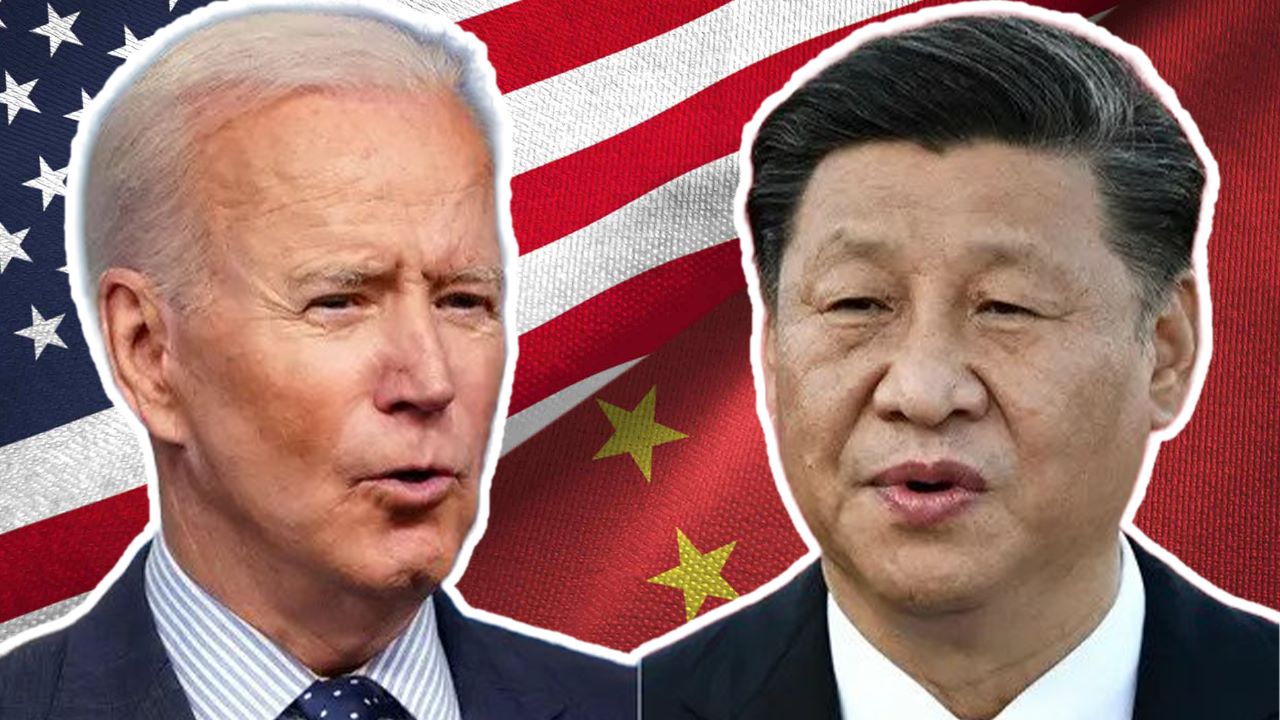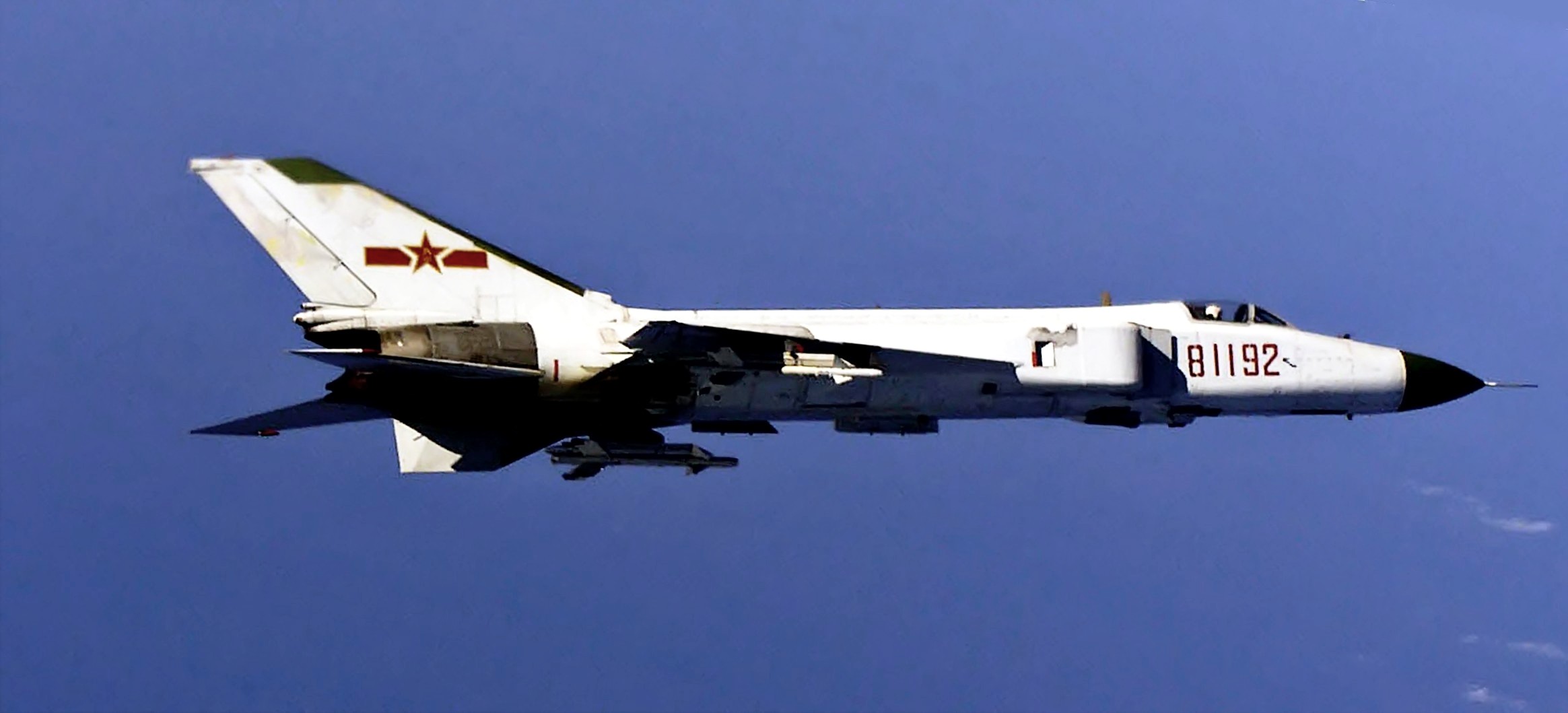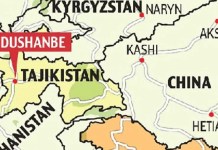Chinese fighter jets have been shadowing Western spy planes, bringing back visions of a repeat of the 2001 incident when a Chinese fighter jet collided with a US aircraft.
As tensions continue to rise between the United States and China, April 1 serves as a reminder that the mistrust between the two arch-rivals dates back more than two decades. On April 1, 2001, a Chinese fighter jet collided with a US spy plane over the South China Sea, killing the Chinese pilot.
A People’s Liberation Army (PLA) Navy J-8IIM fighter and a US Navy EP-3E ARIES II, BuNo 156511, collided on April 1, 2001, causing the Chinese aircraft to crash. While the Chinese fighter pilot succumbed, the US aircraft was forced to land in Hainan, ushering in a long-drawn standoff between the two countries.
Every year, on April 1, Chinese netizens take to their local social media sites to remember and celebrate the legacy of Wang Wei, who was piloting the J-8 aircraft that collided with the American plane and has since been hailed as a daredevil pilot and a Chinese hero.
Keeping up with the tradition of commemorating Wang’s legacy, Chinese state media Global Times wrote on Platform X: “81192 received. I can no longer return. You guys keep going!” #OnThisDay, remember Chinese hero pilot #WangWei, a guardian of China’s territorial airspace and waters, who was killed in a mid-air collision between a US surveillance plane & a Chinese fighter jet on April 1, 2001.” A video was also published.
"81192 received. I can no longer return. You guys keep going!" #OnThisDay, remember Chinese hero pilot #WangWei, a guardian of China's territorial airspace and waters, who was killed in a midair collision between a US surveillance plane & a Chinese fighter jet on April 1, 2001. pic.twitter.com/YUVLDzLERs
— Global Times (@globaltimesnews) April 1, 2024
Several military observers and netizens, however, have mocked Wang’s irresponsible maneuvers, which, they believe, got him killed.
A Singapore-based naval expert who regularly comments on Indo-Pacific naval affairs, Collin Koh, said, “Wang was known before his demise for his bold, sometimes daredevil and over-zealous flying. His departure served as a rallying point for CCP (the Chinese Communist Party), and his “feats” regularly upheld as a role model for younger generations of PLA combat aviators, which is itself worrisome.”
He was joined by several other netizens who quoted the Global Times post to underscore that Wang Wei was an overly enthusiastic and incompetent pilot who soared dangerously close to an unarmed US aircraft operating in international airspace.
One user wrote, “A mid-air collision” makes it sound like it just sort of happened. The US plane was flying over international waters where it had the right to be. There is no international law concept of “kinda closer to our territorial waters than we’d like.” It’s binary.”
China calls one of the most embarrassing dead pilots in history a "hero" for flying straight to hit a giant unarmed airplane (apparently trying to harass the American airplane by "poking" it 😂🤣😱🫨🤣). How stupid can their pilots be??? 😂 https://t.co/ueEeSjQkXk
— Cyrus S (@CyrusShares) April 1, 2024
Mocking the heroism surrounding Wang Wei, some netizens even went so far as to call him a “modern-day Lei Feng,” a soldier who featured heavily in Chinese propaganda campaigns. Intriguingly, Lei Feng has also been dismissed by Western commentators as imaginary and non-existent.
The Chinese people would not be pleased with the negative commentary on Wang Wei. Every year, in addition to the internet remembrance, visitors take flowers to his tomb in Hangzhou. Some even took the J-20 fighter jet replica to his tomb in 2022 for the hero to experience the pride of the nation’s current military prowess.

An essay honoring Wang was also published in 2022 by the PLA Southern Command Theater. The essay noted that the PLA soldiers were continuing the tradition of protecting the South China Sea by flying fighter jets and operating aircraft carriers to protect the open sky and the ocean in Wang’s honor.
A similar theme was observed in social media posts made by pro-Chinese netizens on Platform X, with posts equating the current situation of confrontation over the South China Sea with the Hainan Island incident and Wang Wei’s death.
With rising tension between China and the West, there have been multiple incidents of Chinese fighter jets shadowing Western spy planes, triggering hysteria about a repeat of the 2001 incident. A Chinese fighter jet, for instance, came within 20 feet of a US Air Force jet flying over the South China Sea in December 2022.
Chinese fighter jet buzzes U.S. Air Force B-52 bomber over the South China Sea Tuesday night.
The J-11 came within 10 feet of the bomber narrowly avoiding collision. pic.twitter.com/aMcsdNWShz
— Clash Report (@clashreport) October 26, 2023
Similarly, in October last year, a Chinese J-11 twin-engine fighter jet closed in on a US B-52 bomber at an excessive speed, flying below, in front of, and within 10 feet of the aircraft, putting both aircraft in danger of a collision.
In a high-stakes contest over the Indo-Pacific region, Chinese fighter jets have started to regularly threaten the US and its allies, heightening the chance of a mishap that could trigger a war.
However, Beijing continues to defend these actions by reasoning that Chinese pilots act properly to defend the country’s sovereignty and praise their decision to take prompt, rational, firm, and professional action.

The 2001 Incident
On April 1, 2001, a US Navy EP-3E ARIES II, BuNo 156511, a signals reconnaissance version of the P-3C, took off as Mission PR32 from Kadena Air Base in Okinawa, Japan. It was part of Fleet Air Reconnaissance Squadron One.
Near the end of its six-hour mission, the US reconnaissance aircraft flew at 22,000 feet (6,700 meters) and 180 knots on a heading of 110° at approximately 9:15 a.m. local time. The EP-3E was approximately 70 miles or 110 kilometers away from the Hainan Island at this point.
The aircraft was suddenly approached by a pair of Chinese J-8 fighters from the Lingshui airfield in Hainan. One of the two Chinese J-8IIM was being piloted by Lt. Cmdr. Wang Wei, believed to be 33 years old, who was a squadron leader in the 8th PLA Naval Air Force Wing’s 22nd Regiment, based at Lingshui Airfield.
Every year on April 1, the call sign "81192" is remembered by many Chinese. Do you remember the name Wang Wei? Do you remember the number 81192? On April 1, 2001, a US spy plane rammed and damaged a Chinese jet fighter “81192” in an encroachment upon Chinese sovereignty and… pic.twitter.com/QlRmHlpAIr
— Global Times (@globaltimesnews) April 1, 2024
“We were being intercepted,” said the pilot of the EP-3A, Lt. Shane Osborn. “The [Chinese] aircraft was approaching much closer than normal, about three to five feet off our wing. So, I was just guarding the autopilot, listening to the reports from the back end and from my other pilot, Lt. [Patrick] Honeck, who was in the window watching the aircraft approach.”
Osborn stated that the J-8IIM made two close approaches before the third one when his closure rate was too high. The aircraft struck the No. 1 propeller, causing it to tremble violently.

After that, the J-8’s nose impacted the EP-3’s nose, and the latter’s nosecone flew off. The aircraft rapidly snap-rolled to around 130 degrees and became uncontrollable. When questioned if he had ever had “eyeball-to-eyeball” contact with Wang, Osborn replied that he had during the second close encounter with Wang’s aircraft.
On the other hand, the Chinese put out a very different version of the incident. Zhao Yu, who was flying another J-8 next to Wang, gave the following account in the Liberation Army Daily: “I saw the head and left wing of the US plane bump into Wang Wei’s plane. At the same time, the outside propeller of the US plane’s left wing smashed the vertical tail wing of the plane piloted by Wang Wei into pieces.”
Zhao claimed to have reminded Wang Wei that his plane’s vertical tail had been struck off while advising him to pay attention to remain in flying condition, to which Wang is said to have replied, “Roger.”
“About 30 seconds later, I found Wang Wei’s plane was rolling to the right side and plunging. The plane was out of control. Wang Wei requested to parachute. I replied: ‘Permission granted.’ Afterward, I lost contact with Wang Wei,” Zhao said.
According to the Chinese authorities, the EP-3E slowed down, making it harder for the jets to fly next to and jostle the intercepting planes. The US government has refuted the Chinese version.

However, Wang’s aircraft crashed, and he was eventually lost. The Chinese government initiated an extensive search and rescue operation, with over 100,000 personnel participating, 110 aircraft, over 100 warships, and at least 1,000 other ships, including fishing boats, salvage vessels, and civilian boats. With approximately 52,000 square miles of water covered, the operation took place over roughly ten days.
On its part, the EP-3E crew managed to survive this near-fatal collision, but the damage caused to the aircraft forced them to land at the PLA’s Lingshui airfield on Hainan Island. China detained the 24 crew members for 11 days after that.
The anniversary of the Hainan incident serves as a reminder that a repeat of another such mid-air collision is likely now more than ever as the aircraft of the two sides frequently meet over the South China Sea, which China almost entirely claims. Experts believe this time, it could even set off a war.
- Contact the author at sakshi.tiwari9555 (at) gmail.com
- Follow EurAsian Times on Google News




